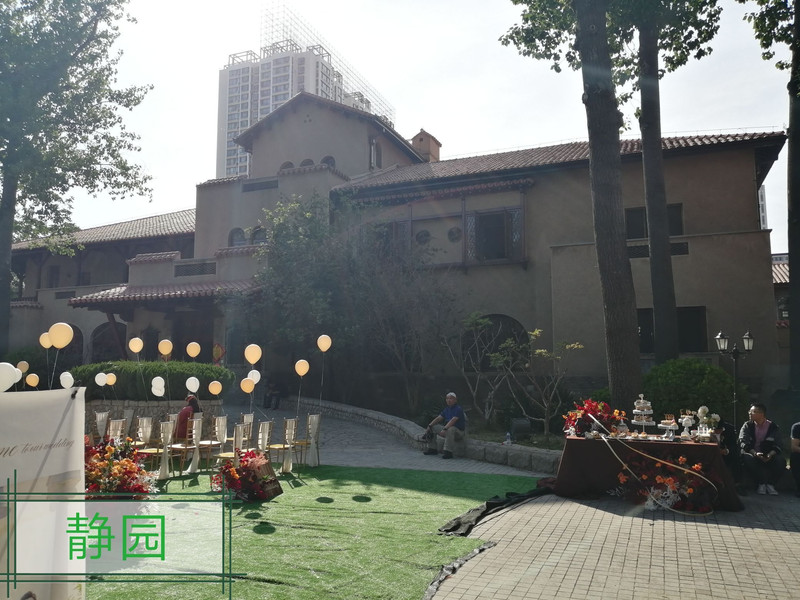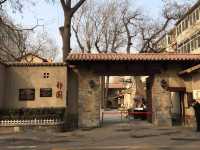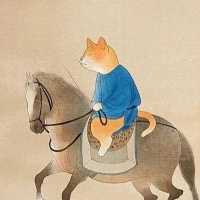Jingyuan, located at No. 70 Anshan Road, Heping District, Tianjin, was built in 1921, covering an area of about 3016 square meters and a construction area of about 1900 square meters. It is a historical building with special protection level in Tianjin and a cultural relics protection unit in Tianjin. Jingyuan was originally named dry garden, for the Beiyang government in Japan, the residence of the minister Lu Zongyu, from July 1929 to November 1931, the last emperor Puyi with the queen Wanrong and the concubine Wenxiu lived here, renamed "Jingyuan", meaning "Jing to raise my Haoran Qi". The park is built with a brick and wooden structure building, blending Spanish and Japanese style in one, lush vegetation, quiet and pleasant, is a typical representative of the courtyard-style private mansion in Tianjin Concession period. After the move out of Puyi, Jingyuan has changed the main, after changes, has been used as office and residential, the courtyard, the building built illegal building 600 square meters, to the finishing has become a veritable miscellaneous courtyard. On July 20, 2007, the restored Jingyuan was opened to the public as a national AAA-level tourist attraction, and has won the title of "China Tourism Brand Charm Scenic Area", Tianjin patriotic education base, national science education base and national youth civilization. So, people see today is a "restore" scene. Moreover, I don't know why it is not open yet, but it can be rented to someone else for a wedding, so I can get in and see it. Ha ha.
;
Jingyuan Garden Review
4.7 /53045 Reviews
Popular Destinations
Zurich Travel | Hoi An Travel | Oslo County Travel | Liloan Travel | Toronto Travel | Olbia Travel | Samcheok-si Travel | Himeji Travel | Hongcun Travel | Chun'an Travel | Fenghuang Travel | Nagano Travel | Menton Travel | Guangdong Travel | Budapest Travel | Shunde District Travel | Koh Kood Travel | Tokushima Prefecture Travel | Semarang Travel | Siguniang Mountain Travel | Washington Travel | Kinnakeet Travel | Guiyang Travel | Pebble Beach Travel | Kamnik Travel | Novo Hamburgo Travel | Covilha Travel | Stalham Travel | Basel-Stadt Travel | Ross County Travel
Recommended Attractions at Popular Destinations
Bangkok attraction near me | Tokyo attraction near me | Manila attraction near me | Hong Kong attraction near me | Seoul attraction near me | Taipei attraction near me | Los Angeles attraction near me | New York attraction near me | Shanghai attraction near me | Shenzhen attraction near me | Kuala Lumpur attraction near me | Osaka attraction near me | Guangzhou attraction near me | Singapore attraction near me | London attraction near me | San Francisco attraction near me | Beijing attraction near me | Macau attraction near me | Bali attraction near me | Ho Chi Minh City attraction near me | Paris attraction near me | Orlando attraction near me | Jakarta attraction near me | Phuket attraction near me | Chicago attraction near me | Toronto attraction near me | Cebu attraction near me | Dallas attraction near me | Istanbul attraction near me | Dubai attraction near me
Popular Attractions
Ha Long Bay | Gardens by the Bay | Hamilton Island | Warner Bros. Movie World | Universal Beijing Resort | Andamanda Phuket Waterpark | Universal Studios Hollywood | Qingliang Valley Scenic Area | Gold Coast Sea World | Melbourne Museum | "The Song of Everlasting Sorrow" | Phillip Island Chocolate Factory | Melbourne Star Observation Wheel | Tacking Point Lighthouse | Messix Peak | Anthivadi Stadium | Reinke & Söhne GmbH Garten und Landschaftsbau | Castagneto | Krayeznavchyy Muzey | Crested Pool | Küçük Çakıl | segers Groenaanneming BVBA | Gunung Tukung | Pointe des grands nez | Pudacuo National Park | The Egyptian Museum in Cairo | Ngong Ping 360 | Cheonggyecheon, Seoul | Rainforestation Nature Park | Muangboran the Ancient City (Samut Prakan)
Popular Travelogues
Bangkok Travelogue | Tokyo Travelogue | Hong Kong Travelogue | Seoul Travelogue | Los Angeles Travelogue | New York Travelogue | Shanghai Travelogue | Kuala Lumpur Travelogue | Shenzhen Travelogue | Osaka Travelogue | Singapore Travelogue | London Travelogue | Beijing Travelogue | Macau Travelogue | Bali Travelogue | Paris Travelogue | Phuket Travelogue | Toronto Travelogue
Payment Methods
Our Partners
Copyright © 2024 Trip.com Travel Singapore Pte. Ltd. All rights reserved
Site Operator: Trip.com Travel Singapore Pte. Ltd.
Site Operator: Trip.com Travel Singapore Pte. Ltd.















